Bicycle tire pressure: what should be and how to pump?
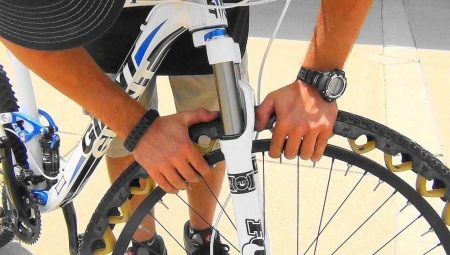
Cycling performance depends on the inflation pressure. Insufficient compressed air pressure in the wheels leads to more frequent punctures and breakdowns in the tube and tire. Excessive - to rubber abrasion. The optimum tire pressure can be determined based on your experience with proper cycling and manufacturer recommendations.
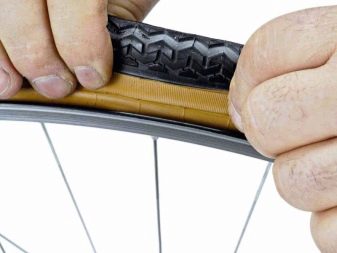
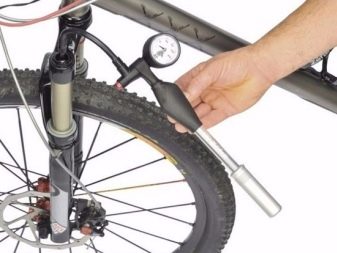
Influence of pressure on ride quality
The correct tire pressure is a specific parameter for each bicycle and for its rubber. The bike owner creates a certain amount of pressure based on the quality of the roads where he rides, or lack thereof. Riding preferences and physical fitness play an important role. The minimum and maximum pressure is determined by the supplier of the particular rubber.
The increased pressure in the wheels allows the cyclist to save energy. By improving the movement of the wheels, a person can lengthen or complicate his route.
The pressure exceeding the limit set by the manufacturer is the reason for the puncture of the chamber from the inside of the rim. The side of the rim where the spokes go and where the protective rubber band runs will eventually break through the chamber with one of its side edges.
Below a lower pressure limit, the pressure will lead to a breakdown of the chamber, or "snakebite". It looks like two adjacent holes. The rim breaks through the chamber in two places at once when the wheel hits an obstacle.
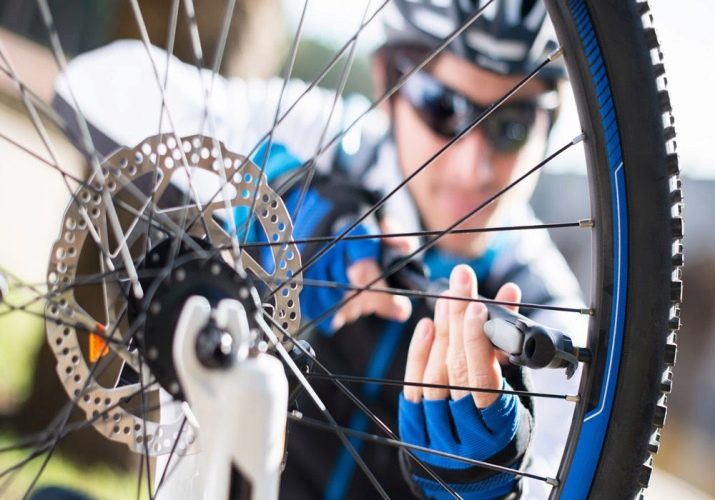
The wheels must be inflated within the pressure specified by the manufacturer. In this case, the tire adheres perfectly to the road surface or to the road without any surface. The camera remains unharmed for many hundreds of kilometers.
The chamber pressure range is indicated on the sidewall of the tire. For example, a mountain bike tire says 1.95 inches wide. Inflate the wheel and measure the width of the tire using a ruler and two squares or a caliper. If the width matches the specified value, and the wheel is elastic and hard to the touch, then you can ride... The width of the inflated wheel is not indicated on the camera - in this example, without a tire, it can inflate not to 1.95, but, say, to 2.1... When the camera already "sits" under the tire, the nipple itself takes on the load from the air expanding it from the inside.
The valve of the nipple - the spool - is reliable enough not to bleed air when the wheel of a stationary bicycle is inflated or when it is under working load during the ride. The pressure rating while driving is already taken over by the tire, and not by the chamber. The tire prevents the tube from swelling even further. The tube is securely held by the tire due to the shape given to all rubber by the cord and bead cable.
If the pressure is too low, the bicycle tire will be deflated under the weight of the cyclist.... It blocks the camera, causing it to abrade, making it more penetrable. Excessive pressure at high speed will rupture rubber when hitting a bump, stone, rails or crack across the road, when driving on overheated asphalt.
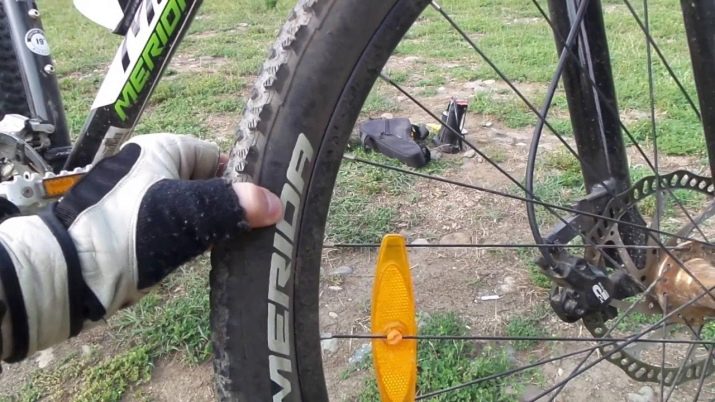
In what and how is it measured?
Bicycle tire pressures are measured in pounds per square inch, pascals, and atmospheres (bars). The atmospheric pressure of the Earth at the edge of the ocean level reaches almost 1 bar. This unit serves as the value multiplied by the factor indicated on the wheel. Calculation formula: 1 atm = 101325 Pa = 1 bar. Pounds per square inch is an obsolete measure. Bar - too, but it is firmly associated in the memory of people with the value of the pressure of one earth's atmosphere (value at sea level). One bar equals approximately 14.5 psi.
The number of bars rarely exceeds 10 units. The number of pounds per square inch is sometimes more than 100. The number of kilopascals is a three-digit (but can be over a thousand) number. Kilopascals are converted to bars or pounds per square inch. According to the above formula, the cyclist inflates the wheel. Deviation from the recommended range of values will result in a high accident rate. You can convert kilopascals to megapascals (MPa) by dividing the number of kilopascals by 1000.
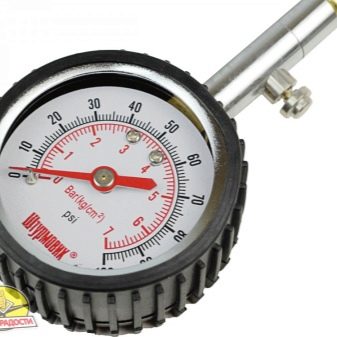
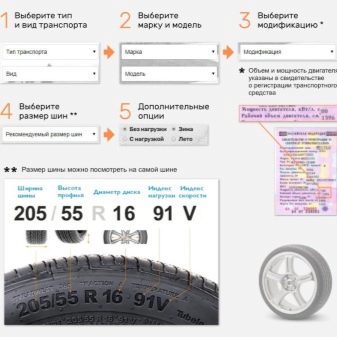
What should it be?
Pressure standards are different for each type of tire.
For road bikes
The norm for road bikes is 8-11 atmospheres (bar), depending on the specific tire, the weight of the bike and cyclist, average and extremely high speed. Here the general rule works: pumping up the manufacturer's recommended pressure (maximum -0.5 atmospheres), you will quickly and safely reach from point A to point B of your route. You are unlikely to be able to squeeze 10 atmospheres with a hand pump. Use a hand or foot pump with a pressure gauge. If your pressure limit is 9.5, then pump 9 and drive calmly at maximum speed.
All chambers gradually poison the injected air through their micropores. Part of it is also vented through the old nipple that has been loosened from thousands of pumping. Rubber itself allows molecules and atoms of atmospheric gases to pass through: compare the molecular size of the vulcanized polymers (this is a long chain) of which the chamber is made, and the sizes of the nitrogen and oxygen molecules. The longer you use one and the same camera, the more intensely it poisons the air - gradual stratification, drying out of the rubber structure does its job. For example, for KamAZ, the wheels, pumped over due to congestion, eventually burst at full speed (one at a time, as the rubber resource depletes).
A road bike with 10 bars in wheels, traveling 40 kilometers per hour and carrying a biker weighing 80-90 kg, undergoes the same thing. During a week, the working pressure in the wheels drops by about 1.5 atmospheres. After feeling the wheel after a 300-kilometer marathon, you will hardly feel that it is lowered, but the pressure gauge of the pump (or car compressor) will immediately indicate this.
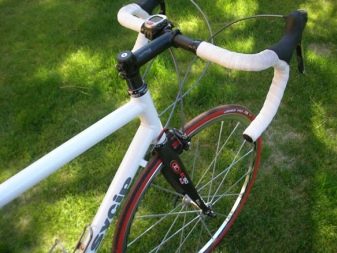
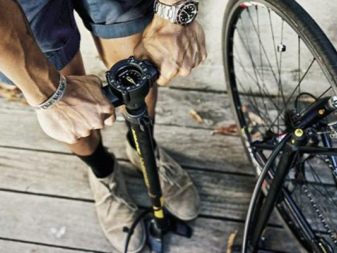
If you do not have your own pressure gauge at hand, you can pump up the wheels of a bicycle at any service station for free using an automatic compressor.
It inflates a bicycle wheel in a few seconds, and when the set pressure is reached, the automatic switches off the air blower. A bicycle owner's own pump is not only a portable tool that allows you to inflate a wheel after a rubber repair. For cycling professionals, the pump is a tool that they use regularly, and often even compelled. The lot of a sports bike is fast driving (up to 40 km / h), racing on highways and cycle tracks. Pumping its wheels below the average pressure will lead to a quick breakdown of the chambers. An additional problem here is the broken, cracked, rough, crumbled and bumpy asphalt.
If you inflate the wheel of any bicycle 2-3 times higher than the maximum value, then this pressure is guaranteed to explode the tube with the tire after the first hundred meters of travel. But even if the rubber could withstand such pressure, the rim would easily get severe damage. "Top" pressure is not the one at which the tire bursts, but the one at which the wheel itself breaks.
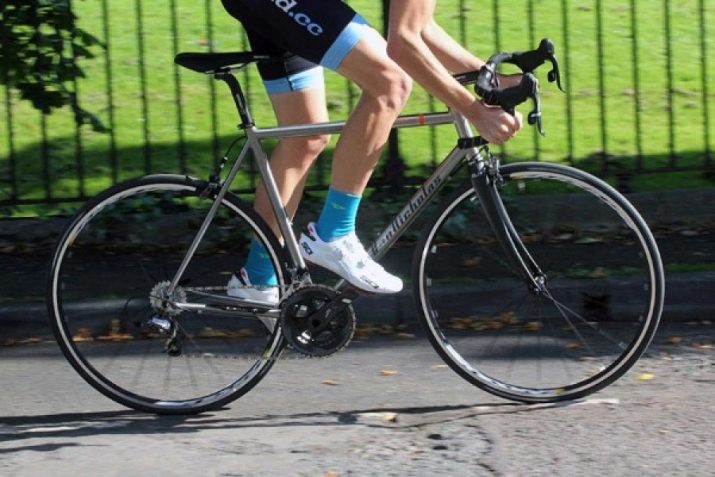
For city bikes and mountain bikes
For a teenage or adult road (or mountain) bike with a wheel diameter of 24, 26, 27 and 27.5 inches, a pressure of 2.2-4 bar is considered optimal. But a road bike can withstand tire pressure up to 5 atmospheres. Exceeding this value will damage the rim on the first bump or explode the camera after acceleration over 30 km / h, sharp braking. A wider rim holds the tube better than a narrower rim. The more elastic the tire is, the more pressure it may need. And this does not mean that it will break with the maximum value.
Maintain the fine line between traction and rolling... Inflated to maximum pressure, the tire will roll very well. And yet the grip will deteriorate sharply, since we are talking about a much lower speed - 5-30 km / h, and not 30-50. With a pressure below 2.2 atmospheres, the tire will noticeably wash out. Crossing and cornering balance will also suffer. The very first bump, passed at high speed (from 25 km / h) will lead to a "snake" breakdown.
The narrower the tire, the more pressure it will need. The above values for "mountain" and "road" tires are suitable for a cyclist weight of 80-85 kg. The heavier the rider, the more wear-resistant rubber he needs, since the extra weight of a person requires more pressure. For dirt roads, off-road and asphalt, adjustments are also made.
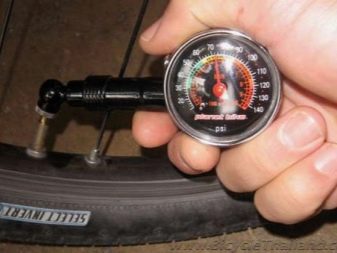
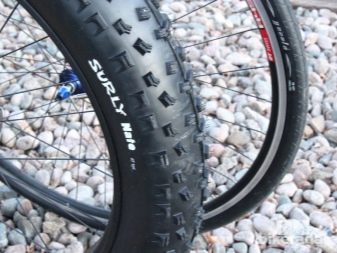
For fatbikes
Fatbikes are best for riding on sand, snow and rocky roads. An example is winter movement on a road that is close to a railway embankment and is covered with a 10 cm layer of snow. The running zone of a fat bike tire is 2-3 times wider than that of rubber for a mountain bike or city bike. The large area of contact of the tire with the road brings the fat bike closer to the wheels of the motorcycle. On a fat bike, you can freely ride on the off-road of forests and fields. The PSI chart is based on an average rider weighing 80 kg.
10psi | Rolled snow, paths |
8psi | Thick snow |
6psi and below | Loose snow |
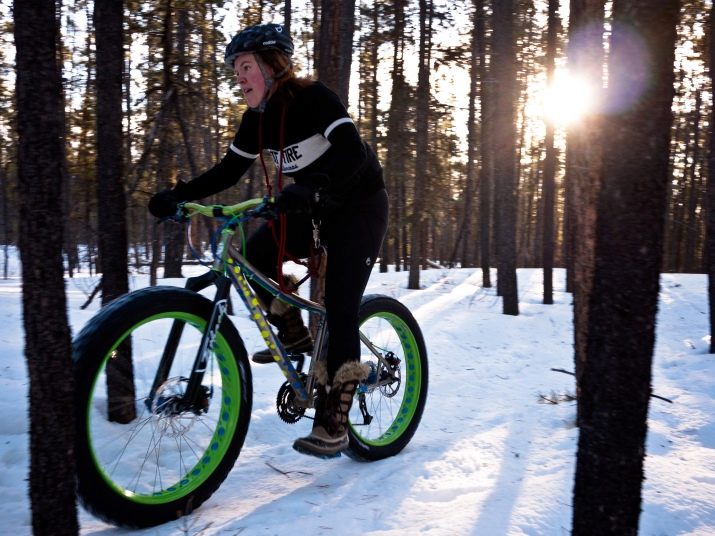
For lighter or heavier cyclists, the values differ by up to 1.5 times the average. The wheels of a fat bike should not be inflated to the pressure in the wheels of mountain bikes, and even more so for road bikes, because this will spoil its handling. It will become noticeably harder to steer at higher speeds when cornering. By creating pressure below the minimum, you run the risk of losing the nipple: during hard braking, the camera will scroll in the tire around the rim, the "nipple" will make a hole and the wheel will immediately deflate.
It will no longer be possible to repair a chamber with a sheared nipple. To ride at low pressure without negative consequences, use tubeless tires. The diameter of the wheel does not matter, only its width and strips in contact with the road while driving are important.
A semi-slick tire requires a pressure close to maximum. The tread of the wheel should only be in contact with the asphalt with the running strip without the use of the side lugs. They, in turn, are only needed when driving on dirt roads. By pumping below average pressure, you cause the side stripes to wear out faster. A smooth road is absolutely useless for them. This will not make the bike more manageable.
For slick and semi-slick tires, a deviation of at least 25% from the average pressure makes the advantages of a particular tire useless. The slick roll will suffer significantly.
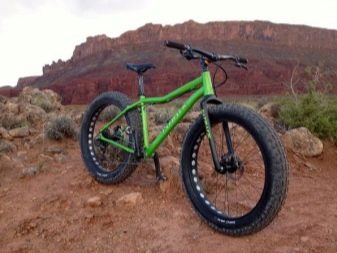
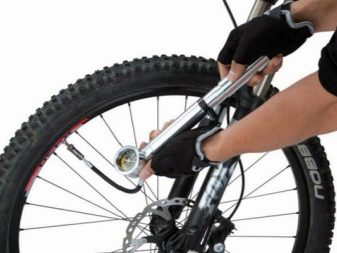
Cross country bike tires have a width of 2.1-2.3 inches and a tire pressure of 3-4 bar. The lug strip on each side of the tire is not as aggressive as that of semi-slick tires.
Extreme BMX and downhill bike riders use special tires with a width greater than 2.3 inches... Good grip is important here. Loss of traction can be fatal, especially when going down a steep mountain or hill. The pressure value is determined empirically without significant deviation from the average value set by the manufacturer.
Road bikes average 9 bar (up to 130 Psi). If the manufacturer is unknown or it is a little-known Chinese company, then the tire does not contain any data on the pressure limits. Inflated to a pressure above the limit mark, a tire is similar in hardness to something that resembles a piece of solid rubber. From this, it is subject to accelerated wear.
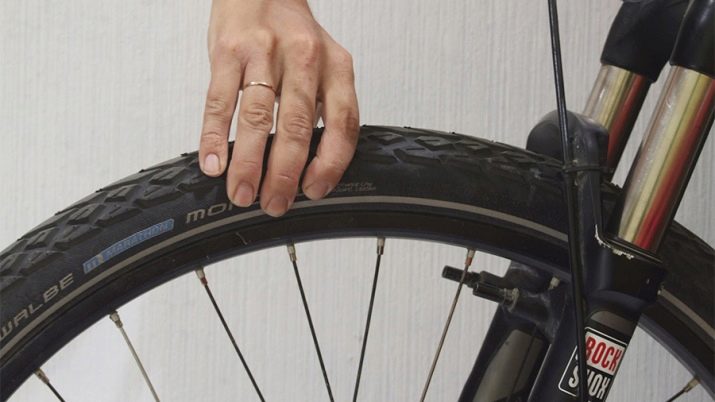
All types of tires, regardless of the type and type of bike, will explode together with the tube if pressure is exceeded and simultaneously overloaded.
This primarily applies to bicycle hybrids, "marching all-terrain vehicles", a kind of "custom" often used by cyclists for multi-day trips and trips. Also, the bike will "goat" - toss you on every bump.
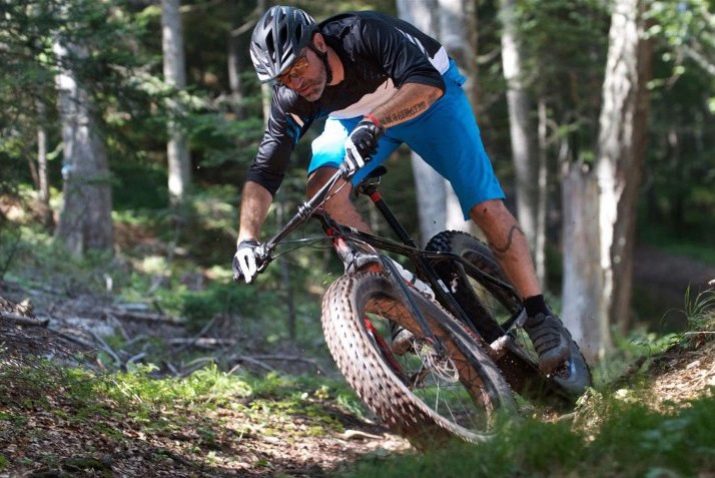
What to consider when pumping?
When pumping up the wheels, take into account a number of factors that in no case should be ignored. It depends on them whether the tire will work out its maximum resource or it will fail, barely passing the minimum distance. Aerobatics - a significant excess of the service life of rubber for the same daily mileage, which has become a habit and a way of life for you.
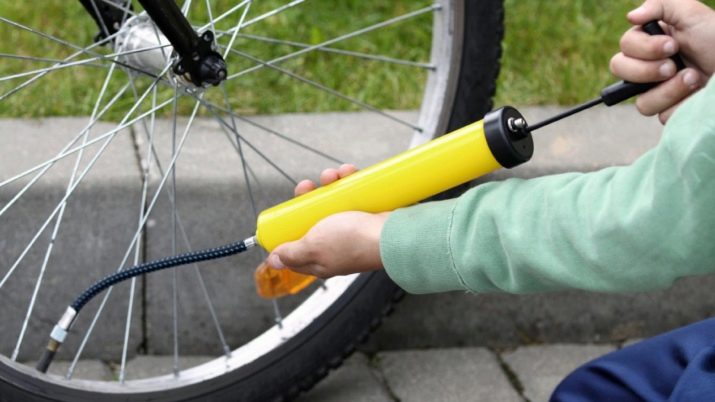
Seasonality
Winter or summer temperature fluctuations can affect tire pressure. There are times when 8 atmospheres pumped up at home in a forty-degree heat turned into 9.5. This noticeably exceeds the average value - the camera breaks through on the very first bump after leaving the house. And in the wheels of a mountain bike, 3.5 atmospheres in a 20-degree frost turn into 2.4.
In winter, road bike owners slightly exceed the maximum pressure before setting off. By the time they pass the first kilometer, the pressure will drop noticeably. In summer, on the contrary, cyclists do not pump their wheels a little. When driving onto a road that is overheated in the summer heat, the pressure will rise to the required value by itself. In both cases it is necessary to create pressure not exactly, but with a slight deviation.
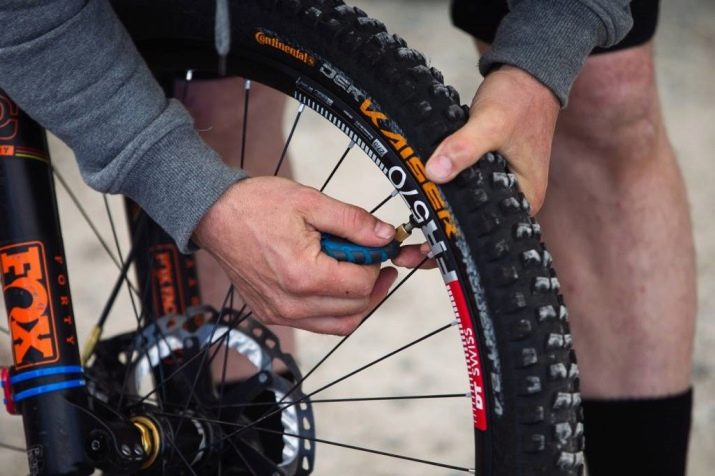
The weight
If you bought an unknown tire for your mountain bike, use the data in the following table. This is a general guideline recommended by experienced cyclists.
Cyclist weight (kg) | Pressure (bar) | Pressure (Psi) |
50 | 2,38-2,59 | 35-38 |
63 | 2,52-2,72 | 37-40 |
77 | 2,72-2,93 | 40-43 |
91 | 2,86-3,06 | 42-45 |
105 | 3,06-3,27 | 45-48 |
118 | 3,2-3,4 | 47-50 |
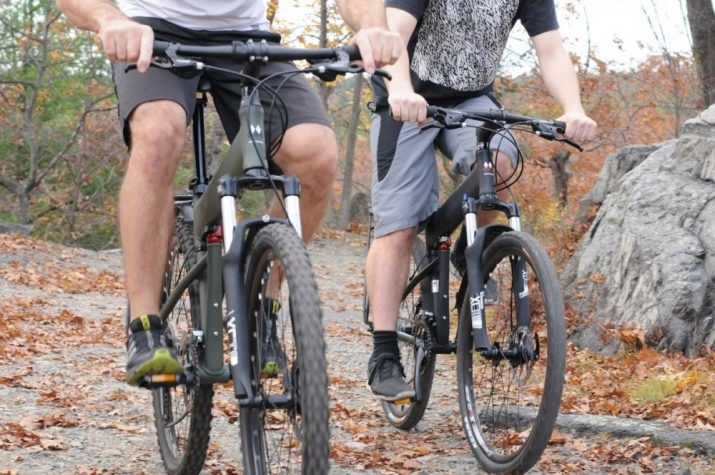
But these values are valid for any tire. Bicycles overloaded with bags (for travelers) need a slightly higher tire pressure.
For each extra kilogram of the cyclist's body weight or load taken on the road, 1% of the total average tire pressure is added. When the bike is overloaded and the wheels are over-pumped, another threat appears - “eights” on the rim.
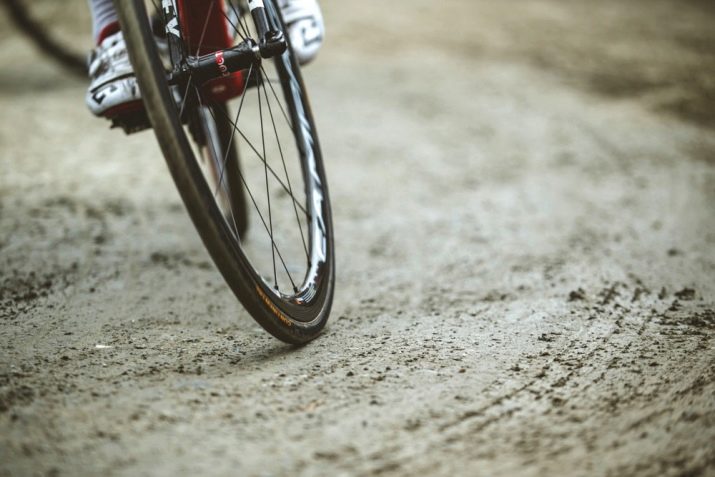
Terrain type
Driving mainly on asphalt, rocky and knurled roads requires slightly more than average pressure. The same rule applies to trick driving on difficult technical tracks. The load from constant shocks and vibrations is almost constant here. And to prevent premature abrasion of the chamber on the tire cord, a pressure close to the maximum is needed. For soft soil, sandy-clay roads, the pressure is selected slightly below the average value.
If the terrain is rugged - asphalt, including broken roads, soil of varying degrees of hardness, then the pressure should be pumped at an average level or slightly higher.
The general principle here is the following: the harder and smoother the road, the more pressure should be.
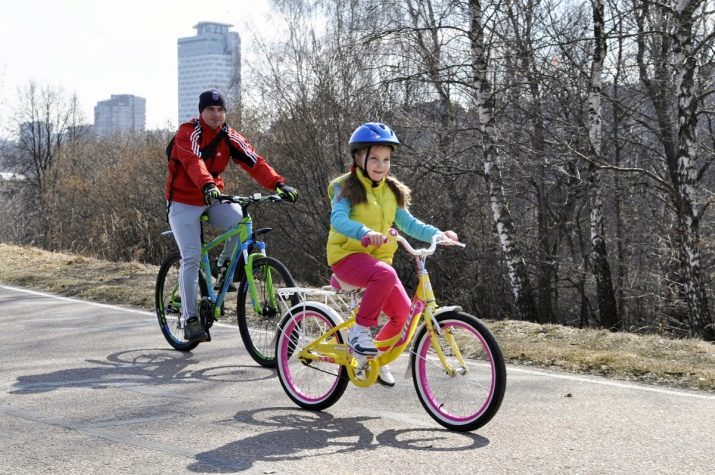
Bikers, who after each ride try to check and correct the tire pressure, often do not experience any problems with the wheels throughout the whole season. This significantly reduces the cost of rubber - it breaks not only from punctures with a careless attitude to wheel pumping. It doesn't matter if you have a sports bike or a regular bike, always create the correct tire pressure.
For information on what the tire pressure should be, see the video.








